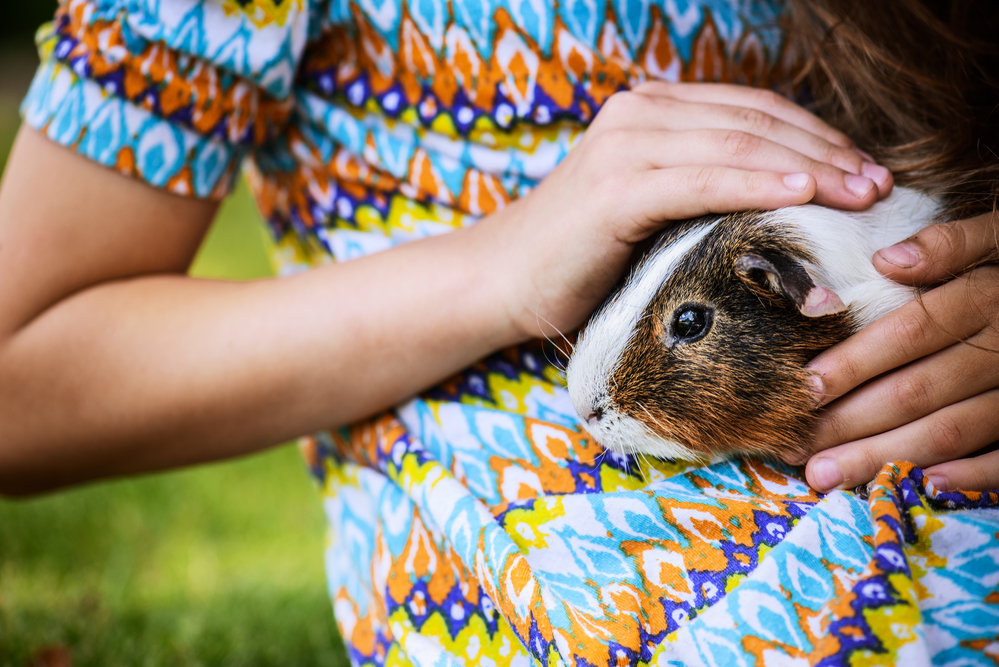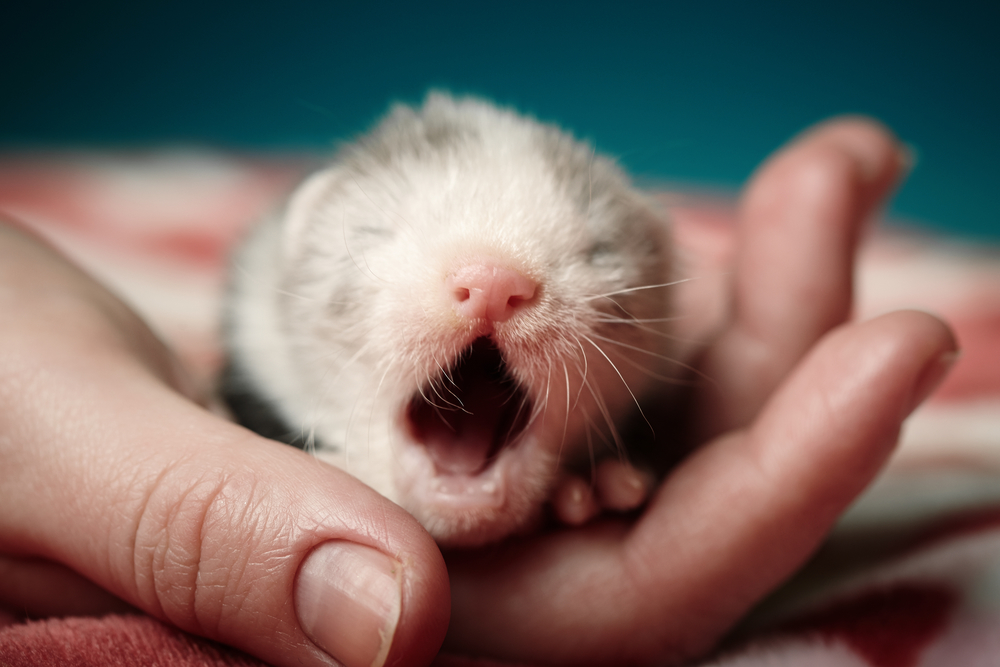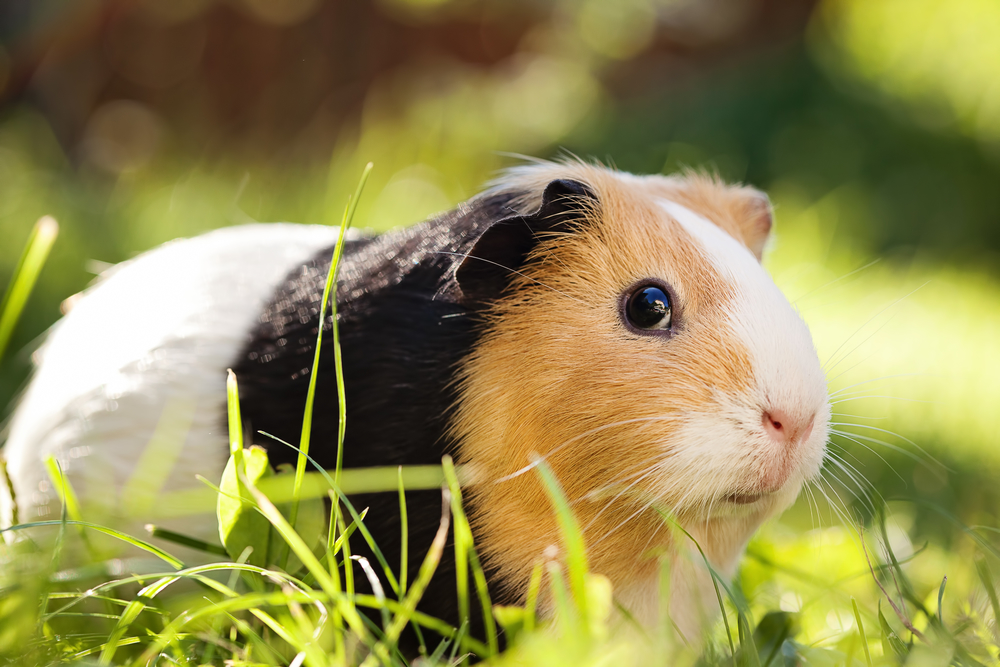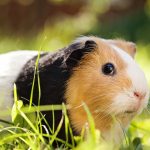Guinea Pigs need dry, warm huts lined with a shallow layer of sawdust (make sure it is rated safe for Cavy’s as they are susceptible to respiratory disorders) and hay for burrowing. Ideally, because of the high susceptibility to pneumonia and URI, Guinea Pigs should be housed indoors and safe from cold or damp conditions. If they are kept outside, their huts need to be covered, warm and protected from the elements.
Indoors, there are a variety of housing options for your pet. If you have the space in your home, designate a room, or fence off a section of a large room for them to roam free. If this is not possible, then you will need a cage. Pet store “Guinea Pig” cages are very small, and considered by many Cavy owners to be the equivalent of a litter box. Keeping a Guinea Pig in such close, confined quarters can be very detrimental to their health and happiness, and is thought to be a form of cruelty by Guinea Pig enthusiasts.
An alternative to cages is using a cubicle system, a series of cubed wire grids interconnected to form an enclosure. They can be interlocked in a number of different configurations. You can be very creative and make a truly fun and unique home for your Cavy this way. Cubicle systems allow you to make separate rooms and even second and third levels. More grids can be used to cover the top to keep out cats. This option is very popular among Guinea Pig enthusiasts, and many owners have boasted about the vast improvement in their pet’s behavior as a result of switching to these environments.
Housing Your Pet Guinea Pig

Let us know if you liked the post. That’s the only way we can improve.












